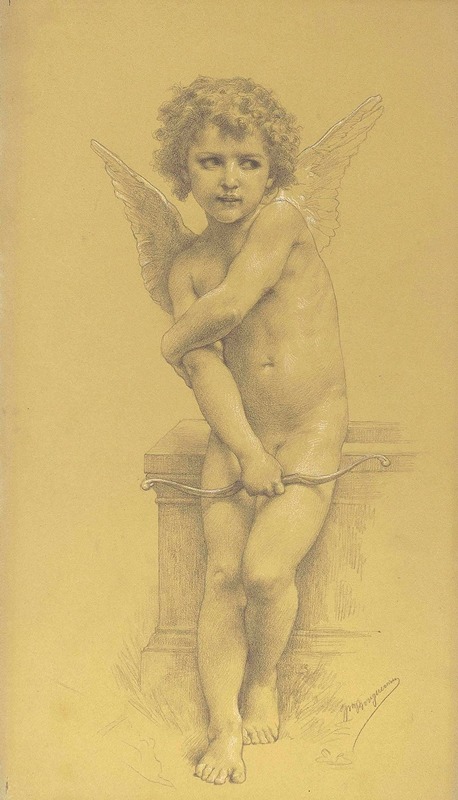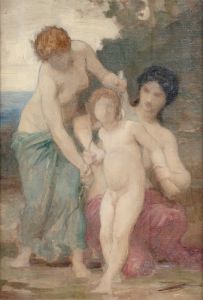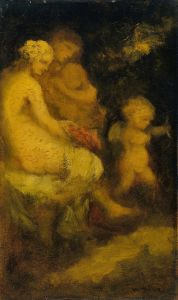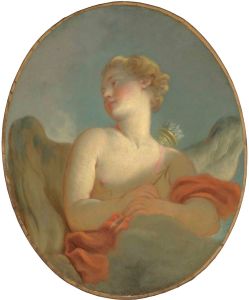
Cupidon et son arc
A hand-painted replica of William Bouguereau’s masterpiece Cupidon et son arc, meticulously crafted by professional artists to capture the true essence of the original. Each piece is created with museum-quality canvas and rare mineral pigments, carefully painted by experienced artists with delicate brushstrokes and rich, layered colors to perfectly recreate the texture of the original artwork. Unlike machine-printed reproductions, this hand-painted version brings the painting to life, infused with the artist’s emotions and skill in every stroke. Whether for personal collection or home decoration, it instantly elevates the artistic atmosphere of any space.
Cupidon et son arc (Cupid and His Bow) is a painting by the renowned French academic artist William-Adolphe Bouguereau. Created in 1891, this artwork exemplifies Bouguereau's mastery in depicting the human form with exceptional realism and delicate detail, characteristics that have made his work highly esteemed in the canon of 19th-century academic art.
William-Adolphe Bouguereau was born on November 30, 1825, in La Rochelle, France. He was a prominent figure in the academic art scene of his time, known for his classical themes, meticulous technique, and his ability to render the human body with lifelike precision. Bouguereau studied at the École des Beaux-Arts in Paris and won the prestigious Prix de Rome in 1850, which allowed him to study in Italy and profoundly influenced his artistic style.
Cupidon et son arc features the Roman god of love, Cupid, who is often depicted as a cherubic young boy. In this painting, Cupid is shown holding his iconic bow, an instrument he uses to strike love into the hearts of gods and mortals alike. Bouguereau's portrayal of Cupid is tender and innocent, capturing the youthful beauty and playful nature of the mythological figure. The artist's use of soft, diffused light enhances the ethereal quality of the scene, while his attention to anatomical accuracy and the delicate rendering of textures, such as the softness of Cupid's skin and the feathers of his wings, demonstrate Bouguereau's technical prowess.
The composition of Cupidon et son arc is carefully balanced, with Cupid positioned centrally, drawing the viewer's eye directly to the figure. The background is kept simple and unobtrusive, ensuring that the focus remains on the subject. Bouguereau's palette is typically soft and harmonious, with gentle transitions between colors that contribute to the overall serene and idyllic atmosphere of the painting.
Bouguereau's work, including Cupidon et son arc, was highly regarded during his lifetime, earning him numerous accolades and a successful career. However, his reputation experienced a decline in the early 20th century with the rise of modernist movements that rejected the academic tradition. In recent decades, there has been a resurgence of interest in Bouguereau's work, and he is now recognized as one of the leading painters of his era, celebrated for his technical skill and his ability to evoke emotion through his art.
Cupidon et son arc is a testament to Bouguereau's dedication to classical beauty and his exceptional ability to capture the essence of his subjects. The painting remains an important example of 19th-century academic art and continues to be admired by art enthusiasts and scholars alike.


















